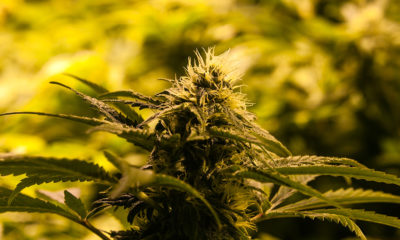
Medical
Understanding The Effects of Cannabis
A breakdown of the science of how cannabis works with our bodies through compounds such as cannabinoids, flavonoids and terpenes.
Now that more and more states are giving their citizens the choice of consuming cannabis responsibly it’s important to understand how and why we get high. Why does the plant effect us and how does it work? In that answer we must also look at and understand that we each have unique genetic makeup and that, in turn, changes how cannabis will affect individuals.
This is very important to toxicologists as they can better understand why and how certain chemicals affect people differently. This area is one of the most understudied when it comes to the cannabis industry and will be of great importance in the coming years: individual, DNA-based, consumption effects. In other words, we will better understand the unique relationship our internal endocannabinoid system has with external stimulation and the effect the terpenes and cannabinoids have on us as individuals. In understanding this it’s crucial to understand how these chemicals work harmoniously with each other in creating a synergistic result.
The entourage effect was first discussed in 1998 by Dr. Raphael Mechoulam and S. Ben-Shabat. Effectively the term is used to describe the way in which all the compounds in cannabis come to work together creating the magical healing and recreational effects we have come to associate with the plant.
There are a vast number, some say close to 400 different chemical compounds, found in the cannabis plant. These include flavonoids, cannabinoids and terpenes. It is the combined interaction of these chemical compounds that creates an effect or relief in the user. This cocktail of ingredients works with our endocannabinoid system. All mammals have one and this system both creates and processes cannabinoids naturally in our bodies. This occurs primarily through two different receptor sites, the CB1 and CB2. The first is located in the brain and the second is located in the body and is closely connected to pain receptors, which is one reason cannabis is such an effective pain killer. The entourage effect works to modulate the high, it creates a modifying or controlling influence on the way our brains feel different combinations of the chemicals found in cannabis. The terpenes work largely to modulate the cannabinoids they are a modulator meaning they control how the high or effect works. Imagine a car that can only go in a straight line, with the entourage effect we can steer the car. The terpenes are what allow that steering.
When eating cannabis the modulation also occurs but the CB2 receptors tend to break the delta-9 cannabinoids down into delta-8 as they get processed via the liver. This provides a very different effect and also medically speaking can help tremendously with arthritis or pain relief. When entering the bloodstream the cannabinoids piggyback in a way and work closely with the bodies pain receptors. Giving the plant such a powerful analgesic effect. Our bodies can naturally produce the neurotransmitter anandamide which was named after the Sanskrit word for bliss. It is this neurotransmitter that is most closely linked with the uplifting blissful feeling associated with ingesting cannabis. This neurotransmitter is also closely linked with the effect known as the runners high and is the bodies own endocannabinoid system releasing the neurotransmitter endogenously.
By better understanding our own personal DNA and how it is changed by cannabis will better help us understand if there is a natural deficiency in anandamide with some people. This would make for an interesting explanation as to why so much of humanity has turned to the plant for relief. Perhaps it’s a sign of our times that our collective bodies supply of anandamide is so low we have en masse decided to self-medicate with cannabis. Further study will definitely shed some light into this and will help us better understand our relationship with a plant that has been with us since the beginning since thousands of years ago.
TELL US, are you interested in the science of how cannabis works?


























